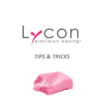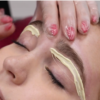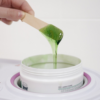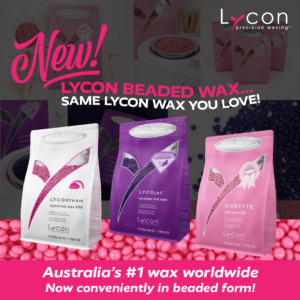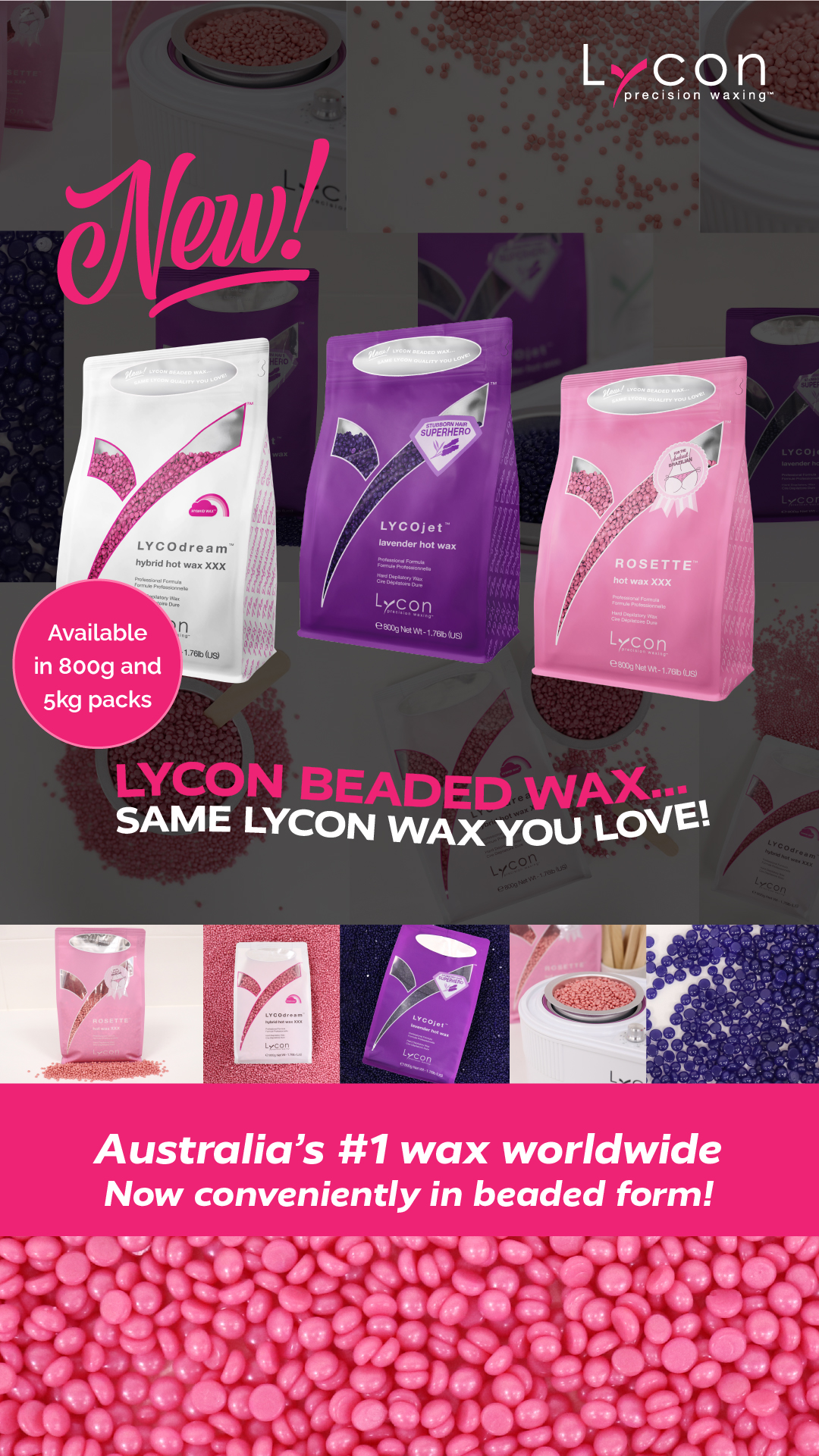Deciding whether to use Hard (Hot) Wax or Strip (Soft) Wax will depend on a few things such as the area being waxed, the type of hair (ex. coarse, fine) and the client’s skin sensitivity. LYCON recommends that Strip Wax be used in larger areas such as legs, back, arms as it is economical due to the wax being applied thinly and removal is fast and efficient. Hard Wax, which is also known as Hot wax, is a type of depilatory wax that is applied directly to the skin and removed without a strip and is great for sensitive area waxing such as the underarms, face, and bikini area. The benefits of using a quality Hot wax include the ability to remove short, stubborn hair, ease of use, and reduced redness and irritation of the skin.
Step By Step Waxing Protocol
STEP 1: Heat the Wax to the desired temperature. Begin by heating the wax in a wax warmer with an adjustable temperature control. For Hot wax, the wax will have a honey like consistency. Test a small amount of the wax on the inside of your wrist prior to applying to the client to ensure it is not too hot. Strip wax will have a much runnier consistency. Finding a quality low temperature Strip wax will be beneficial as the wax will be applied super thinly and less product will be used overall.
STEP 2: Cleanse the skin. Apply a cleanser to the skin prior to waxing to cleanse the skin of any debris such as dirt or make-up. Waxing opens the hair follicles so it is important to ensure the skin is completely clean prior to waxing. A cleanser that has added soothing ingredients in it such as Chamomile will further soothe the skin.
STEP 3: Apply Oil. Apply a small amount of Pre-Waxing Oil to the area being waxed to add an extra barrier of protection and moisture to the skin. Pre-Waxing Oil is recommended for use with all Hard waxes, but for clients with extra dry skin, the oil can be used when waxing with Strip wax as well.
STEP 4: Apply the wax. For Hard wax apply the wax against the direction of the hair growth with a good amount of pressure and spread it to about the thickness of a banana skin’s thickness back in the direction of the hair growth, creating a lip on the edge. Check to ensure the wax has set and then remove the wax with a motion of a plane taking off, bending your wrists around the contours of the body.
For Strip wax, you can apply the wax in the direction of the hair growth. Press a waxing strip (muslin, pelon, etc.) firmly on top of the wax coated section of the body and rub down the strip in the direction of the hair growth. Remove the strip in one motion against the hair growth ensuring not to pull upwards and instead move with the contours of the body. Always pull the skin taught before pulling to prevent skin drag and bruising.
STEP 5: Cleanse. Cleanse the skin with a cleanser to close the hair follicles and ensure there is nothing left on the skin that could cause irritation.
STEP 6: Post Treatment. Apply a post waxing treatment. Depending on the area being waxed and the client’s skin needs, you can apply a targeted treatment such as an ingrown hair spray or an after-care lotion. Lotions that contain added benefits such as Tea Tree help to further soothe the skin and reduce any irritation.
STEP 7: Educate. Educate your client on post waxing care such as avoiding sun exposure for at least 24 hours, remembering to exfoliate in between services and offer any recommendations for take home products such as ingrown hair treatments.


